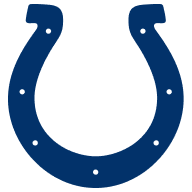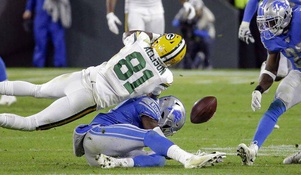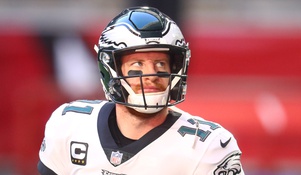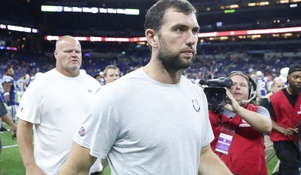Who Fed It And Who Ate It: 2019 Preseason Week 3
The dress rehearsal series of games brought out the normal batch of starters for the first half, at least in most games, as the regular season draws near. But as the action on the field begins to intensify, so does the consequences of those games. This week, we will delve into another adventure into subpar field conditions in unfamiliar surroundings, as well as two events that could potentially upend a divisional hierarchy.
The Green Bay Packers and the Oakland Raiders saw radical alterations to their field in Winnipeg, Manitoba, Canada as yet another foible in the NFL's ongoing efforts to play games outside the United States This is a problem that is getting to the point of embarrassing for the league. After barely catching the poor condition of the field in Azteca Stadium before a monumental tilt between two of the NFL's elite teams last year, an issue converting a Canadian Football League field to NFL specs seemed simple enough. The most pressing concern at Investor Group Field, home of the Winnipeg Blue Bombers, surrounded covering the place where the CFL puts their goal posts; at their goal line. The NFL puts their goal posts on the back line, so all that had to occur was to put a patch of artificial turf over the mounting on the concrete foundation under the field. Only one problem: when the turf patch was placed, it would not only be softer than the rest of the field, it was also decidedly uneven. This would make those areas of the field dangerous due to an increased risk of injury. As this was a preseason game, it was adjudicated that the field of play would be shortened to 80 yards and there would be no kickoffs; drives after scores & opening each half offenses would start at their own 25 yard line. This ultimately took away from the NFL experience for the paying fans in attendance and brought on an expected critical backlash from the Nationalist Football League crowd; those who believe that any and all NFL games should only be played on native American soil. On the issue of the former, the NFL must improve their approach in handling these fields when the league takes their product abroad. The aforementioned problems happened in North America, where other Stateside options were available, as the Mexico City debacle was avoided by moving the game back to Los Angeles (as it was a Rams home game that would have been sacrificed), while physical modifications to the playing surface would suffice in Winnipeg, as the game was ultimately an exhibition match. If the NFL wants to build its brand outside the US, they need to ensure that the staff on the ground is the best in the business. Continued incidents like this will only harm the league's credibility in the long term. As for the American Football for Americans lot, get over it. All American sports leagues are playing games outside their traditional borders, from Major League Baseball playing series in Japan to the National Basketball Association setting up games in South America and Asia, many high profile sports leagues are offering their particular product on a global stage. While there may be heated debate about international expansion, the concept of the NFL establishing an international presence is a fait accompli. The NFL will continue to do business outside American borders, but they need to be better than what they've been if they wish to build the brand positively.
The AFC South may have been upended with the season ending injury to Houston Texans RB Lamar Miller... There always seems to be a serious injury to a key player on one team that not only can affect that franchise, but also have a ripple effect across a division, a conference, or even the league. Sorry, Texans fans, but you caught one with Miller suffering an ACL tear that put him on Injured Reserved, which ends his 2019 season before it started. For a team that boasts one of the NFL's best receivers in WR DeAndre Hopkins and a young stud quarterback in DeShaun Watson, why does Miller's absence sound like such a tragedy? Because Miller was Houston's top rusher for the last three years. Losing a productive and reliable skill player of that caliber could have a detrimental effect on the Texans offense, as a one dimensional offensive attack will put a ceiling on their potential this season. So where do the Texans go from here? As it stands now, the next man up is recent trade acquisition Duke Johnson. The Browns had a crowded backfield with Nick Chubb and Kareem Hunt (upon returning from an eight game suspension), so Johnson was brought on to bolster position depth. Now, the fourth year pro may be called upon to take Miller's role as the primary back. If he can be effective, enough to keep the passing game open for Watson and Hopkins, then Houston could repeat as division champs. But that remains to be seen once the season gets under way. But another departure has changed the complexion of the league entire...
... But the NFL was rattled upon the sudden retirement of Indianapolis Colts QB Andrew Luck When we as fans hear about an NFL player sustaining an injury, we are often told how severe it is, given a reported return to the field, and are apprised of any setbacks or complications. For the man enduring the pain, it is nowhere near as cut and dried. The player has to endure the pain every day. He is the one under the surgeon's scalpel, he is the one working through rehab working to gain either full usage of an affected appendage or be pain free if it is an injury to the torso. And he is the one to fight through all of this mentally. And for Luck, who is considered a generational talent at the league's most prominent yet difficult position, was overcome with the psychological component of injury rehabilitation, and has decided to retire at the age of 29. The damage that a football player's body suffers is unnerving, but some of the ones Luck had were particularly gruesome. Many are aware of the shoulder of his throwing arm that required surgery where he was lost for the 2017 campaign, but some were not aware or forgot that he suffered at least one concussion, torn cartilage in his rib cage, and a lacerated kidney. Luck played for six seasons, showing his brilliance on a Colts team that were never built right by previous general manager Ryan Grigson and not built in time by current GM Chris Ballard. Grigson and Indy owner Jim Irsay are being cast as villains in Luck's downfall and rightly so. Grigson did very little to protect Luck in either spending high draft picks or free agency dollars to invest in a good offensive line. Grigson was already branded a failure once Ballard arrived and essentially razed the roster from the ground up. Now the Seattle Seahawks executive will forever be known as one of the men who squandered a franchise talent like Luck. The other man responsible for this travesty is Irsay, as his stubbornness to retain both Grigson and previous head coach Chuck Pagano for longer than their due date only accelerated Luck’s demise. Irsay needed to be swift and decisive with the men who were responsible for building and leading his franchise, especially given the fact that he had the luxury of having Luck. When a club has a clear franchise quarterback, it is incumbent on ownership to be proactive in ensuring that they have a top executive that can build a roster and a coaching staff that maximizing all the skill and talent of those young men. Irsay took Luck for granted, and that may be a mistake he never gets to rectify going forward, as franchise quarterbacks don't grow on trees.
Godspeed, Andrew Luck. Like Irsay, we as fans may have taken your presence on football fields on Sundays for granted as well, and that is our loss. The Gridiron Eye, most assuredly speaking for many football fans, wish you nothing but the best as you open this new chapter of your life. Thank you for the memories.







